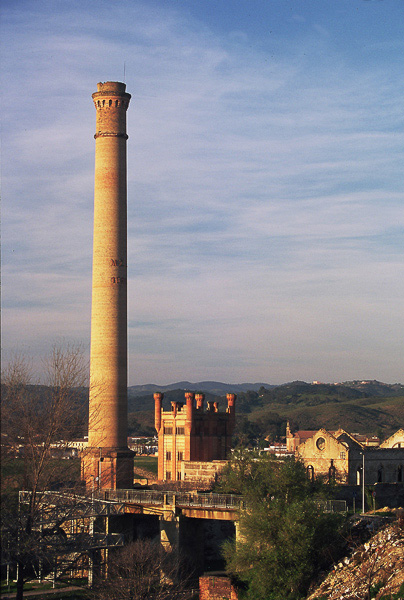Villanueva del Río y Minas

The township consists of two centers: Villanueva del Río and Minas, located at the edge of the Sierra Norte county, next to the Guadalquivir river. It thus has two different types of landscapes: to the north, mountainous terrain covered with abundant vegetation of olive trees, pasture land, evergreen oaks and with a varied animal population; and the plains to the south.
Its long mining tradition is evidenced by abundant remains related to mining activities in the township. It also offers the Roman archaeological site of Mulva-Munigua, of which the temple is outstanding.
Other buildings of interest are the Iglesia de San Fernando in Minas, the Iglesia de Santiago el Mayor in Villanueva del Río, and the Historical Site of Minas de la Reunión.
History
The town is called Villanueva del Río y Mina and the capital is Villanueva de las Minas. It was incorporated on November 19, 1944.
Between the 4th and 3rd centuries B.C. a settlement was established in the AREA and continued to exist following the conquest by the Romans. Called Mulva, the city must have had a brief but successful existence thanks to the mines, evidence of which is the sanctuary of Munigua.
In 1282, Alphonso X granted the town the Carta Puebla (town charter) and the Fuero Real (royal privileges).
The present day town was founded in the 15th century on a fief of the Duke of Alba. As a result of the support given by the townspeople during the siege of Granada, in 1494 it was granted the title of Muy Leal (very loyal).
In 1571, Philip II sold it to Fadrique Enríquez de Ribera. At that time it was called Villanueva del Camino.
The origins and main economic activity of Las Minas, which is five kilometers from Villanueva del Río, are based on the mining resources of its coalfields, which were exploited from the beginning of the 19th century until 1972, when the government decreed that they be closed down.

- Max 16
- Min 14
- Max 60
- Min 57
- °C
- °F












